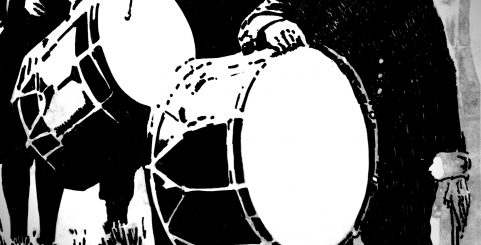Oulton High House
The manorial residence in Oulton is known locally as Oulton High House and it has some ghost stories associated with it. Dating from the 16th century, it has been suggested that the house was used for storage by smugglers in the 1700’s when it stood empty for a few years. It has been suggested that the stories were created by the smugglers to scare people away from the building.
Now a private residence, at one point the building was used as a school and John Ingram’s account of the ghosts dates from this time in his ‘The Haunted Homes and Family Traditions of Great Britain (1897)’
Oulton High House, in Suffolk, now a school, was long known as “the Haunted House.” It was built in 1550 by one of the Hobarts, and still retains a fine old mantelpiece, and other curious carved work, as ancient as the house itself. It is popularly believed to have acquired its ill-omened title on account of some deed of darkness committed within its precincts. At midnight, according to tradition, a wild huntsman and his hounds, together with a white lady carrying a poisoned cup, are supposed to issue forth and go their feverish rounds.
The origin of one member of this spectral group is traced back to the reign of George II, and the story is that the owner at that period of the High House, a roystering squire, returning home from the chase unexpectedly, discovered his wife with an officer, his guest, in too familiar a friendship. High words followed, and the injured husband striking his wife’s lover, the man drew his sword and drove it through his assailant’s heart. The assassin and his guilty love fled, carrying away with them all the jewels and gold they could obtain possession of.
After a lapse of several years the guilty woman’s daughter, who had been forgotten in the hasty departure, having grown to womanhood, was affianced to a youthful farmer of the neighbourhood. A bleak November night, on the eve of the marriage, as the happy pair were sitting together in the old hall, a carriage, black and sombre as a hearse, with closely-drawn curtains, and attended by servants clad in sable liveries, drew up to the door. These men, who were masked, rushed into the hall, and seizing the young girl, carried her off in the carriage to her unnatural mother, after having stabbed her betrothed as he vainly endeavoured to rescue her. A grave is stated to be pointed out in the cemetery at Namur, as that in which was laid the corpse of the unhappy daughter, her mother having, so it is alleged, completed the catalogue of her crimes by poisoning the hapless girl. And after that, there is little wonder that the old residence was haunted by the spectre of the wretched woman, as wife and as mother equally criminal. As to what the weird huntsman and his ghostly hounds signify, tradition is silent.
I have also come across a reference to tradition that there was a tunnel running between High Street and Oulton High House, the distance of about two miles. Whether this existed or not I cannot say, though it does seem doubtful.




Recent Comments